The votes are in, jury deliberations have concluded, and the winners are… pv magazine’s revamped schedule of awards from 2019 has delivered a diverse pool of innovators spanning the entire PV supply chain. Eight products have been selected as being worthy of recognition as award winners, with nine entries being highly commended by our international jury of industry experts.
The numbers tell the tale: 121 entries from 25 countries, 16 jurors across six categories, and eight eventual winners. Entries came from right around the world, with companies in China (28), Germany (12), and the United States (13) leading the way.
The pv magazine Annual Award underwent a significant expansion in 2019, with entries collected in four “award windows” throughout the year. And the winners represent the diversity and accelerating innovation present in the industry today.
In selecting winners, there is always a tension between truly cutting-edge innovations that may face an uncertain future, and more mature technologies that are making an impact in the global marketplace today. While both were considered, a heavier weighting was placed on the latter during deliberations, with real-world performance, market, cost, and durability impacts coming to the fore in most cases.
| pv magazine 2019 awards | ||
| Category | Winning company | Winning product |
| Modules | LG Electronics | NeON R ACe |
| Inverters | Goodwe | A-ES Series hybrid inverter |
| BOS | Shoals | Big Lead Assembly |
| Materials | DuPont | Clear Tedlar |
| Tools | Meyer Burger | CAiA |
| Sustainability | First Solar/SunPower | Series 6 module series / Maxeon module series |
| Publisher’s award | Huawei | SUN2000-185KTL string inverter |
pv magazine award – Publisher’s Pick
Huawei SUN2000-185KTL string inverter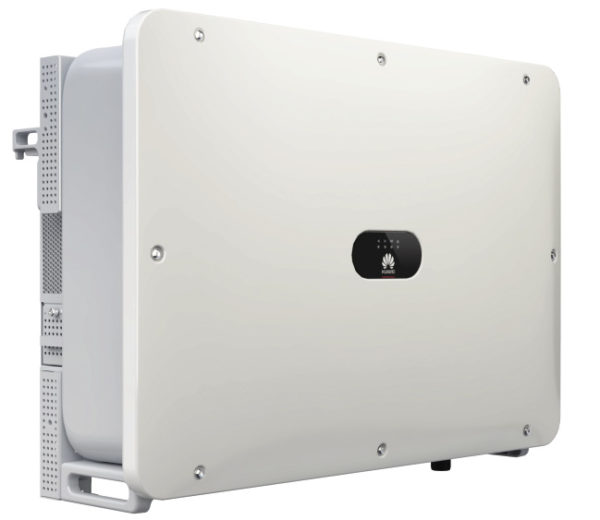
The Publisher’s Pick award focuses only on the particular product that was submitted by the PV manufacturer to the pv magazine award process, but also takes a broader view encompassing the manufacturer’s contribution to lowering the cost of solar energy. Taking this holistic view, Huawei stands out as a trailblazer in making string inverters the product of choice for rooftop installations and utility-scale power plants.
Huawei’s SUN2000-185KTL stands at the pinnacle of these efforts and its 9 MPPTs with 18 inputs provides a powerful option for large-scale installations, especially when difficult environments, trackers, or bifacial modules are involved. In these cases, multiple MPPT inverters can minimize string mismatch to boost the yield of such installations.
I recently attended the Bloomberg NEF Summit in Shanghai, where pv magazine had the opportunity to interview Rongfang Yin, executive vice president of Trina Solar. Trina is another solar pioneer and Yin anticipates that about 50% of the manufacturer’s 2020 shipments will be bifacial modules. Already today, almost all of the company’s modules that are shipped to Australia and the Middle East are bifacial. The move from mono to bifacial reminds us of the shift from central to string inverters. It was only three years ago that central inverters still had a majority share (56.6%) of the global market, according to GTM Research. Now it is the other way around, with string inverters taking the crown. Huawei’s development and promotion of string-based architectures was instrumental in bringing about this shift and it would not be surprising if the move from mono to bifacial further accelerates this trend away from central. Multiple MPPT string inverters can best deal with the vagaries of albedo and this capability promises to be another driver for increased string adoption.
Eckhart K. Gouras
Modules
High performance was the name of the game in module technology in 2019, with mono PERC being standard, and TOPCon and heterojunction the contenders quickly moving into the mainstream. Cast mono, otherwise known as mono-like, is also worthy of a mention. Beyond the cell, ultra-thin glass, transparent backsheet, and bubsbarless or multi-busbar are all contributing to quicker installations and higher performance. But it’s an AC module that has taken this year’s top gong.
Winner:
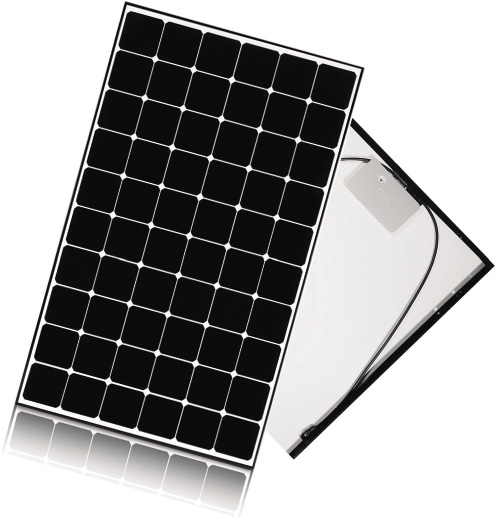 LG Electronics, NeON R ACe
LG Electronics, NeON R ACe
Introduced to the market in September 2019, LG’s latest module brings AC power to its established NeON series. Aiming squarely at the rooftop market, the 375 W NeON R ACe comes equipped with a 320 W microinverter and can be easily coupled with the LG EnerVu monitoring app. With 21.7% module efficiency, the panel utilizes LG’s mature n-type cell technology, covered by the company’s 25-year manufacturer warranty.
Juror comments
Pierre Verlinden: What I found most innovative is that it is a ready plug-and-play system. This means that the installer doesn’t have to install the microinverter and then the modules and connect all of that together – including putting in a gateway. It also provides module-level rapid shutdown, which will become mandatory in the United States as of January [2020].
The price tag is probably quite high, but it would be a very attractive solution, particularly in the United States. The gateway connects automatically with the modules and there is absolutely no work to be done by the installer to set up the system.
Anika Giller: It is am embedded product, easy to install, requires less space, with very high efficiency and is n-type, so LID-free.
Market penetration does need to be proven over the long run.
Highly commended:
GCL System Integration Technology, GCL-M3/72GDF
GCL’s new 72-cell module delivers 405 W output at a cell efficiency of 19.9%. But it’s the cast-mono half-cut cells, otherwise known as mono-like, that sets it apart. It demonstrates that cast mono can achieve efficiency levels to rival mono PERC.
Juror comments
Jay Lin: A cast-mono module is courageous, but it is something that I would like to encourage.
Anika Giller: It is an innovative approach to go where mono is with multi in terms of efficiency.
Highly commended:
Jolywood, JW-T72N
N-type TOPCon cells power Jolywood’s latest module, which achieves 72-cell output of 415 W, with 20.66% module efficiency. With n-type technology delivering zero LID, Jolywood guarantees 87.4% power output after a whopping 30 years. Glass-transparent backsheet encapsulation results in a weight of 25 kg.
Juror comments
Jay Lin: I encourage the usage of n-type cells. Jolywood is using n-type cells and with TOPCon – which is developing this technology.
Anika Giller: Zero LID is a big topic that we are seeing, through our batch module testing, at the moment. However, n-type is more expensive, making its market impact a little limited.
Highly commended:
Jetion, JeThrü – JT SSh
Although relatively standard in terms of cell technology, interconnection and module design, Jetion’s JeThrü has delivered a 72-cell glass-glass module at a weight comparable to glass-backsheet. To do this, the company has deployed 1.6 mm x 1.6 mm glass, courtesy of parent CNBM.
Jury comments
Pierre Verlinden: 72 cells at 21.7kg is very impressive. It makes it a highly-reliable dual-glass module that could be used on the rooftop, which is usually not the case because of the weight. The installers will really, really like that module.
The Jury
Anika has more than five years of solar energy experience. She is currently engaged in serving clients in more than 40 countries. Her responsibilities include expanding CEA’s business, as well key account management.
Jay Lin – Chief Consultant, PV Guider
Jay is the chief consultant at PV Guider. He has more than 15 years of experience in photovoltaic research, production, and system integration. PV Guider is a consultancy offering quality assurance services for investors, insurers, and banks.
Pierre Verlinden – Founder, AMROCK
Pierre is a veteran PV researcher, having carried out fundamental solar cell research at KU Leuven and Standford University. He has lead R&D teams at SunPower and Trina Solar, the latter in the role of chief scientist.
Inverters
Big, bulky and producing only AC power – those days of the inverter are long gone. Today manufacturers compete over functionality, especially in the residential sector, by packing their devices with tools like a Swiss Army knife. And that Swiss Army knife approach to inverters is what the jury was particularly impressed with. The inverter landscape, however, is broad and a whole range of products for different sector applications has really impressed the esteemed jury.
Winner:
GoodWe, A-ES Series hybrid inverter 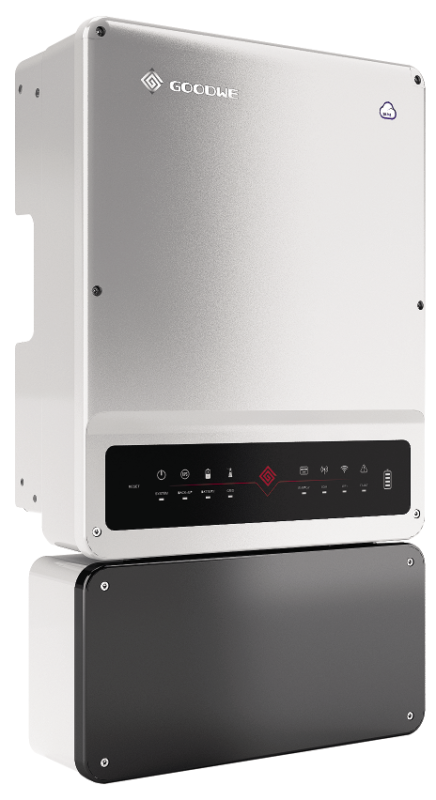
A hybrid inverter is a two-in-one solution and promises to make the use of storage inverters obsolete. This saves costs on the extra storage inverter, and roundtrip energy efficiency from solar panels on the roof, to the battery. And then into home appliances, the savings can also be higher in such setups. The party piece, however, was the fact that it allows simple retrofitting of a battery without new power electronics and the availability of emergency power supply – a feature the market demands more and more.
Juror comments
Cormac Gilligan: Goodwe has a product that will have strong demand in two to three years, when consumers think, ‘why should I buy a PV inverter? You may as well buy a hybrid in order to a add solar with storage from day one or futureproof my investment and have it energy storage ready.’
Jenya Meydbray: In today’s rapidly expanding solar PV and energy storage markets, flexibility in design and operation of the equipment provides the end user with assurance that their investment will continue to meet future needs. The GoodWe solution is a multi-functional inverter system capable of integrating solar, energy storage, and critical loads while interfacing with the utility grid.
Highly commended:
SolarEdge, Virtual Power Plants
Sungrow, SG250HX string inverter
The jury recognized SolarEdge’s Virtual Power Plant approach as a product that helps to drive centralized generation with the Sungrow high-power string inverter. Entering a new stage of the energy transition, a virtual power plant truly takes on the challenge of fluctuating demand and supply of power, micromanaging thousands of data points. Meanwhile, the jury recognized that the bulk of power will still be generated in utility-scale solar parks, and driving their cost down is something that high-power density string inverters can do.
Juror comments
Marco Jung: SolarEdge’s VPP offers a complex learning algorithm for optimized energy management and ensures continuous connectivity to thousands of DER types from multiple vendors. That delivers near real-time aggregative control and data reporting of DERs and loads (PV, batteries, EV chargers, and other loads).
Juror comments
Hakki Karacaoglan: Sungrow’s 250 kW string inverter is the solution for regions, where the central inverter implementation is difficult to realize.
Featured entry:
ABB, PVS980-58 central inverter
Juror comments
Marco Jung: From a power electronics perspective this is an impressive product with its really innovative and efficient new cooling solution. The well-known patented ANPC-topology underlines the innovation. Both technologies together lead to a large increase in power density.
Cormac Gilligan: The ease of servicing, modular design, high DC/AC ration to 2.0 and power up to 5 MW enable ABB to offer next-generation design for central inverters.
The Jury
Cormac is responsible for managing the research of the global PV inverter and balance of system (BOS) markets. He supports detailed coverage of the energy storage industry, carrying out research and authoring reports on the quickly growing market for storage inverters.
Balance of systems
From trackers and cleaning solutions all the way down to cabling and connectors, a PV array is much more than just modules and inverters. And innovations in these components that can cut costs by simplifying system design and maintenance, or enable better performance from the energy components, to make a valuable contribution to PV systems and the broader industry. With that in mind, our jury of experts in this category chose to recognize a solution that has already demonstrated potential on the ground.
Winner:
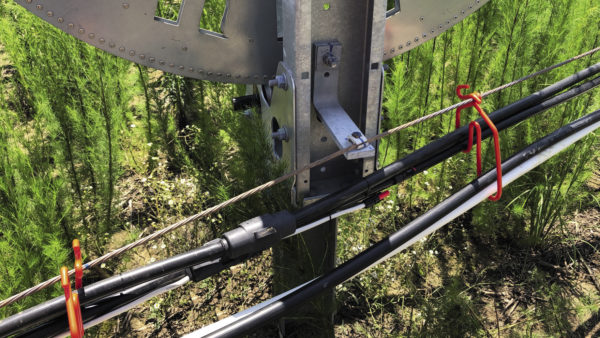 Shoals Technologies, Big Lead Assembly
Shoals Technologies, Big Lead Assembly
A “plug and play” solution to transmit power from module to inverter, Big Lead Assembly promises to eliminate combiner boxes and trenching, simplifying the installation process. More than 9 GW has already been deployed throughout the world.
The jurors named this entry from Shoals Technologies as the winner, thanks to its proven potential for speeding up installation times and bringing down component costs by eliminating combiner boxes and simplifying this aspect of installation. It was also seen as a cost-competitive product.
Juror comments
Subrahmanyam Pulipaka: The ease with which this solution can be deployed, the impact of it on the O&M of a plant, and its asset liteness are what makes this distinct.
Beth Copanas: It’s more of a plug-and-play concept. Once you set up a team to do it, there’s not a lot of things they have to change and work around in the field. Developing troubleshooting techniques with this assembly has been a little more complicated, but I do see it as an impactful product.
Michael Woodhouse: Our cost models show that this could save anywhere between 3 and 5% of the electrical work costs. And it could save some associated wiring costs with the combiner boxes, etc.
Highly Commended:
Nextracker Gemini & Ecoppia T4
Jurors in this category also awarded high scores to Nextracker’s two-in-portrait Gemini tracker, thanks to its potential for savings by having fewer foundations dug into the ground, to allow for non-uniform project designs. And Ecoppia’s T4 Cleaning Robot was mentioned for its innovative approach to low-cost automated cleaning.
Juror comments
Beth Copanas: Fewer piles and foundations to have to install is a potential saving. It depends so much on the site and soil conditions, and then wind and snow loads.
Michael Woodhouse: It seems like a pretty adaptable technology, and we expect robots to evolve a lot.
The jury
Beth has over 15 years in the renewable energy sector and began her solar career in 2005 as a rooftop installer for residential and commercial PV systems in California. Since then, her career has spanned from design and installation to energy modeling and performance testing of residential, commercial and utility-scale projects totaling almost 1 GW. Beth earned an M.S. from Stanford University’s Atmosphere/Energy Program in 2009, became a NABCEP PV Installation Professional in 2010, and currently serves as director of solar energy at RES (Renewable Energy Systems).
Subrahmanyam Pulipaka, CEO, National Solar Energy Federation India
Subrahmanyam, who is a BITSAA Global 30 Under 30 Award recipient, is an alumnus of BITS Pilani in Electrical & Electronics Engineering and is one of the youngest winners of the BRICS Young Scientist Award – 2018.
Surbhi Singhvi, Consultant, Bridge to India
Surbhi has more than five years of experience in the energy sector. She specializes in analyzing market trends and policies in the solar sector. Prior to joining Bridge to India, she worked with CUTS International, CEEW and India Infrastructure. She holds an undergraduate degree in economics from St. Stephen’s College, Delhi, and a master’s degree in economics from GIPE, Pune.
Michael Woodhouse, Researcher, National Renewable Energy Laboratory
Michael is a senior analyst within NREL’s Strategic Energy Analysis Center. His activities are focused on solar energy technologies, economics, and policy. He also serves as associate editor for the American Institute of Physics peer-reviewed Journal of Renewable and Sustainable Energy. He is also the lead economics analyst for the DuraMAT Consortium, which is a program of U.S. university and national lab research administered by NREL.
Materials
When it comes to the components that go into making a module, cost is king, and any new innovation seeking market acceptance will need to prove its worth in adding up to a lower cost per watt, as well as meeting the increasingly demanding requirements for components that need to perform in demanding outdoor environments for 25 years or more. With this in mind, the jurors selected a winner based on its proven potential in enabling bifacial technology, in addition to providing manufacturers looking to exploit the clear benefits of bifacial modules with an alternative to heavier glass-glass.
Winner:
DuPont, Clear Tedlar
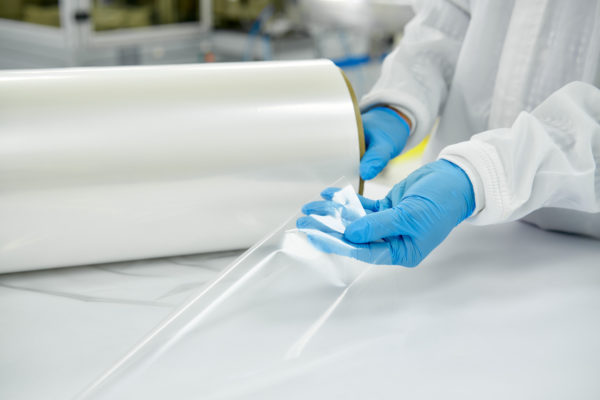
DuPont introduced a transparent version of its Tedlar polyvinyl-fluoride backsheet film earlier this year, which the company says is transparent to all waves of UV light in the solar spectrum, and even filters out damaging UV wavelengths, to protect the cells and the backsheet’s underlying laminate.
The backsheet film’s market impact is already visible, with modules from JinkoSolar, Jolywood and others introduced to the market in 2019.
Juror comments
Alex Barrows: With transparent Tedlar, I feel like it definitely is having an impact. A transparent backsheet is cheaper than glass-glass, and of course has positive impacts on module weight.
DuPont has been involved in transparent backsheets for more than a dacade – for use in BIPV modules. So, it’s not new but it’s new to being a big deal in the market.
Bifacial PERC and transparent backsheets both need more acceptance, and using something like Tedlar – with a strong level of trust and a strong brand name – makes a lot of sense.
Highly commended:
Toyo Aluminum, Aluminum Paste for Passivated Contact Cells
Toyo Aluminum’s front side paste potentially eliminates the need for silver in high-efficiency cell concepts like TOPCon and back contact – an innovation that could significantly bring down the cost of such technologies. While the jury felt more testing was needed to prove this potential, and more evidence of its market impact is still needed, this is an impressive innovation, indeed.
Juror comments
Alex Barrows: The Toyo paste offers significant potential. With TOPCon, silver paste accounts for around 2c/W, so 8-9% of the cost. If the Toyo aluminum paste can deliver on performance, clearly 2c/W is a significant advantage for TOPCon.
Jonathan Govaerts: I think that over the long term, as Toyo claims for IBC applications, it will be a very interesting route.
The jurors in the Materials category also noted the Coolback solution as worthy of mention, thanks to its innovation in lowering operating temperatures, but noted that not being bifacial-compatible presents a major downfall to achieving market acceptance.
The silver paste developed by China’s DK Electronic Materials was noted for its potential to enable atomic layer deposition processes in cell production. And further innovations in co-extruded backsheets. using polypropylene from Borealis and Bischof & Klein, were also recommended for their potential to replace other backsheet core layers that have proven to be problematic, while also continuing to drive down costs.
The jury
Alex is senior research analyst at Exawatt. He focuses on when and how new technologies will influence the PV market, and oversees PV market data analysis for the company. He obtained his PhD in the physics of perovskite-based solar cells from the University of Sheffield.
Jonathan earned his Ph.D. degree from Ghent University, Belgium, in 2009 on packaging and interconnection technology for (flexible) electronics. Since then he has been working with the Solar Cell Technology group at imec, focusing on cell-module integration of silicon solar cells.
Tools
Today’s PV cell and module makers have a sophisticated kit of tools at their disposal. However, it is never immediately apparent which technology pathway will develop. The deliberations of our 2019 Tools award jury clearly reflected this.
Winner:
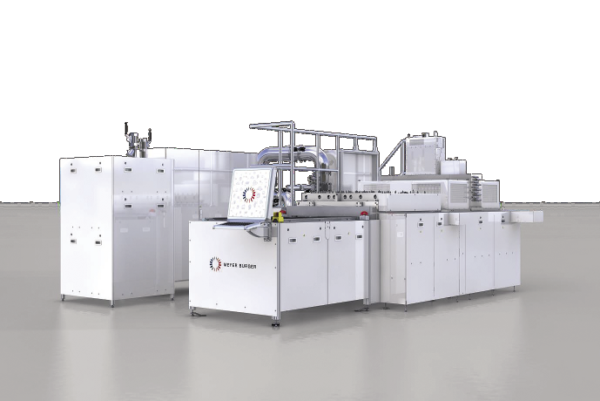 Meyer Burger, CAiA
Meyer Burger, CAiA
Meyer Burger’s CAiA tool was a new addition to the Switzerland-based supplier’s portfolio in 2019. It uses a PECVD process to deposit the doped polysilicon passivation layer required for TOPCon solar cells. While there is still significant conjecture among equipment suppliers and manufacturers as to which deposition technology is the best for TOPCon production, given Meyer Burger’s pedigree as a supplier of PECVD tooling for PERC production, the jury was convinced that if the CAiA can be scaled to a cost-effective tool for cell makers, it could be well positioned to supply this next step toward higher efficiencies.
Juror comments
Yali Jiang: I do review TOPCon as what is coming next after PERC. Meyer Burger is integrating what it used to do together with this new technology, making it easier for the manufacturers to adopt. I do note that it is a lab tool.
Karl Melkoynan: This is a very good innovation because it can be readily adopted and lines upgraded. However, the biggest question is the cost and technology properties, because TOPCon was always known as being suitable for n-type, but it is very important to now have it for p-type.
Alison Ciesla: It is an innovative tool and it is probably the path forward on TOPCon – we know that Meyer Burger does a great job of executing the processes with PECVD.
Simon Price: It could be argued that if LPCVD can do the same job as PECVD for TOPCon production at a lower cost, then the CAiA isn’t going to work. However, if Meyer Burger has a much superior process here and it controls the IP, it is not out of the question that it could do the same as it did for PERC with TOPCon.
Highly commended:
h.a.l.m., cetusPV IUTC 3
German flasher supplier h.a.l.m. has introduced its new bifacial flasher to the market, which features a light source from both sides for accuracy, alongside high throughout.
Juror comments
Yali Jiang: From a market perspective we think that bifacial modules will be a major growth trend next year – representing around 20% of global installations.
Simon Price: Cell mismatch in bifacial modules is potentially a big problem. I did notice that h.a.l.m. does claim quite high throughput, which hints that it might be viable in production.
Highly commended:
FuturaSun: Silk Stringer
Italy’s FuturaSun has proffered a stringing solution that aims squarely at high quality stringing – by performing the soldering in a vacuum chamber, while still delivering high throughput.
Juror comments
Alison Ciesla: It does sound really innovative to me, because the soldering is done in a vacuum, reducing the oxygen levels to make sure that there isn’t oxidization.
Karl Melkoynan: It is an interesting tool because it simplifies and speeds up the interconnection of the cells. The stringer requires less silver, reducing costs.
The jury
Alison completed a PhD in Photovoltaics in 2017 focusing on reducing recombination and mitigating LID. She is the inventor of more than 10 related patents and has published over 20 research papers. She has extensive experience in managing technology transfer and industry collaborations with many larger silicon, wafer, cell and module manufacturers from Asia, Europe and America, and spent a month with the materials research team at Oxford University in 2017.
Simon Price: CEO, Exawatt
Simon is the CEO of Exawatt, whose consulting services combine detailed market tracking, cost analysis and performance forecasting, with a deep understanding of the technical issues at play in all facets of PV manufacturing, from polysilicon to modules and inverters. He has been involved in solar since 2008, when he co-founded a technology company focused on solar cell surface passivation.
Karl Melkoynan: Senior Analyst, IHS Markit
Karl is a senior analyst within the Solar Technology and Business Intelligence teams at IHS Markit. He specializes in market research and analysis for power and energy, in particular research of PV markets and solar companies. His research focus includes financial analysis, manufacturing technologies and materials, and trends and requirements of the PV industry.
Yali Zang: Analyst, Solar Insight, BloombergNEF
Yali joined BloombergNEF’s solar insight team in 2016 after two years in the company as a data researcher. She covers the PV manufacturing sector, tracking the supply and price dynamics along the value chain, from polysilicon to solar modules.
This content is protected by copyright and may not be reused. If you want to cooperate with us and would like to reuse some of our content, please contact: editors@pv-magazine.com.
